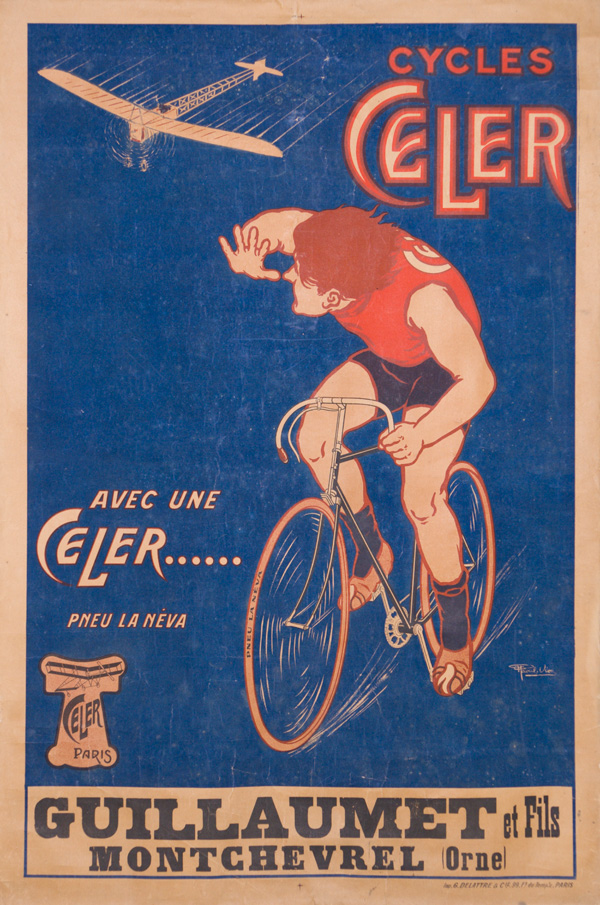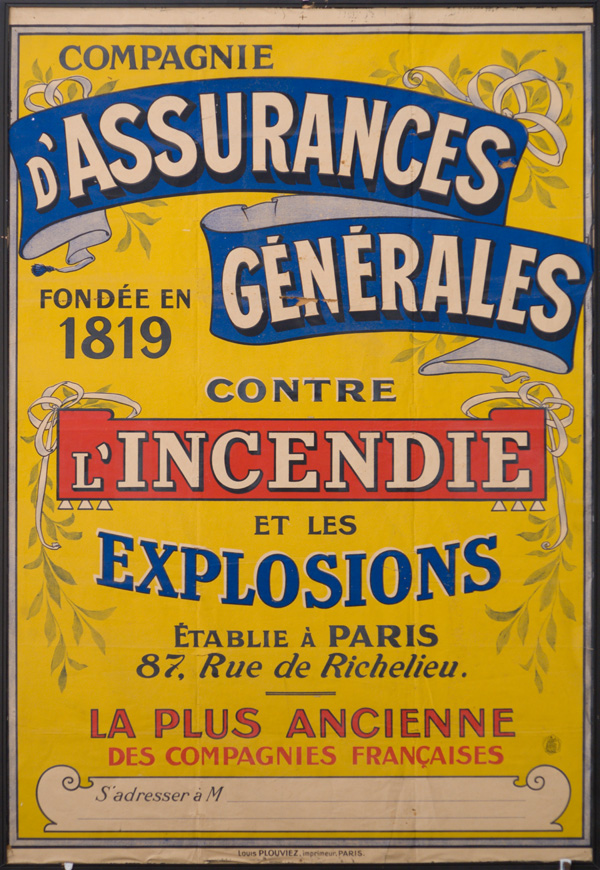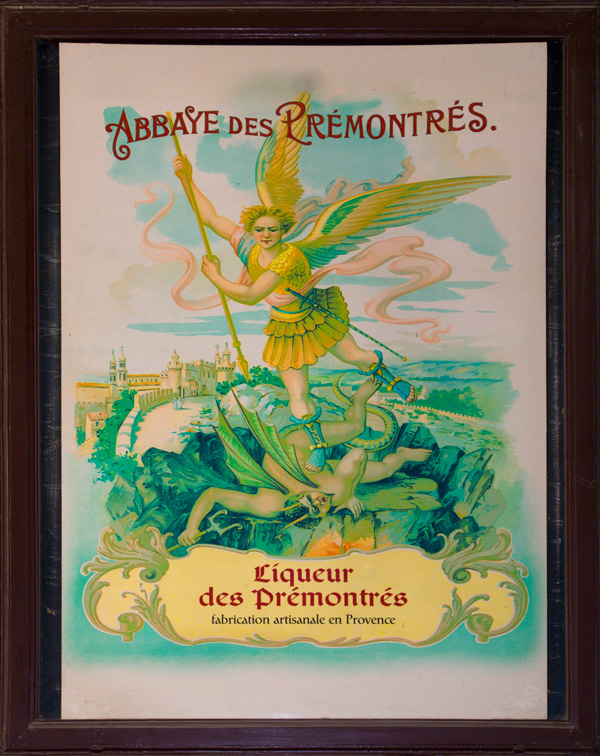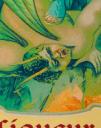How anti-shake aids art exhibit shooting
I SELL digital images through Alamy, the on-line photo library. When an original piece of art is out of copyright, and displayed in public or by an owner permitting photography, the ability to get a good quality reproduction copy on the spot without lights, tripod or flash is valuable. Some 8 per cent of my overall Alamy images sales over the past four years have been of signs, notices and labels – disproportionately high, compared to the actual number of such shots. As someone has commented, editors like pictures which tell their own story, and sometimes have words in the pictures does just that.
In June, we were welcomed into one museum near Uzès with the words “go ahead and take pictures, cameras OK!”. In Prague, you can pay a small fee and have a badge stuck on you which permits photography throughout the national museum at the top end of Wenceslas Square. In the Quai d’Orsay gallery in Paris, you are free to stand right in front of a Van Gogh and make a careful copy. Some people bring a tripod in. These are exceptions and many museums will ban photography. The National Trust in Britain asked us to deposit our camera bags at the entrance office when visiting Cragside in Northumberland.
The French attitude of generally permitting photography in museums and galleries, and most public buildings, is hard to explain given French laws about photographing private property. It is refreshing compared to the Trust’s restrictive and controlling approach, which is said to be because of security, but in reality is designed to protect the sales from their own image library. They will even contact other libraries and demand the withdrawal from sale of any pictures showing Trust property. What a pity they can’t take the Czech approach and sell permits instead!
If you are able to make good repro standard copies of works of art, postcards, old newspapers, advertisements, posters and so on they have a commercial value. The Bridgeman Photo Library in Britain created a substantial business doing little but copying out-of-copyright artworks in its early days, as did the Mary Evans Picture Library. Christie’s Photo Library is a new venture by this auction house, capitalising on all the top quality photography of art and antiques which they must do for catalogues. If you are not interested in the commercial side, it’s great fun to be able to make your own inkjet reproduction copies for use as decor.
One thing which has helped me get repro-quality sharp images of artwork on location is Anti-Shake, in its original Konica Minolta form, or Super Steady Shot as it is now known in the Sony Alpha 100. Sensor-based internal image stabilisation doesn’t just cover the rescue of difficult situations, like hand-held 1/15s. It also improves the quality of hand-held 1/60ths, often to the point where the result is a close match for a tripod shot. My requirements are very stringent – the images have to be enlarged from 10 megapixels to 17 megapixels, normally 5120 pixels on the long side, creating a file larger than 48Mb (standard 8-bit per channel RGB uncompressed TIFF). No sharpening must be used when converting the image from raw, and if for any reason it is necessary to start with a JPEG from the camera, the sharpness must have been set to -2. Otherwise, the photo library will detect that sharpening has been used and reject the image.
Digital images do not look very sharp to the eye when processed this way – they can appear quite soft. What matters to the library is the preservation of fine detail behind this apparent softness, without artefacts or edge-effects created by using sharpening in raw conversion, or unsharp masking later on. Enlarge from 10 megapixels to 17 – larger than the image from a Canon EOS 1Ds MkII – and any unsharpness in the actual shooting becomes all too apparent. A mere couple of pixels of camera shake can be enough to ruin the result.
Lens-based stabilisation is efficient, but the resolution of the lenses is often slightly impaired, especially at the edges. In-body definitely wins for allowing the full potential of top quality glass to reach the sensor, along with the maximum possible choice of that glass – fast standards, macro lenses, G-series high quality zooms, and lenses with no ‘IS/VR’ equivalent like the Carl Zeiss 16-80mm.
Here are some examples of how well the Sony Alpha 100 deals with the problem. I use the Carl Zeiss 16-80mm Æ’3.5-4.5 ZA zoom, and in the first two instances – both inside a museum by existing light – that meant ISO 200, full aperture on the lens at around 50mm focal length, and hand-held times around 1/60th. This is not impossible to hand-hold without stabilisation, it’s right on the border of the old ‘one over the focal length’ rule. At 50mm, the lens is equal to a 75mm on full frame, which means 1/75th would be advised for shake free shooting. However, digital is FAR more critical than film. Circles of confusion are being judged not at 10 x 8″ size, but more often than not at 20 x 16” or bigger. Halving the ‘safe’ speed is not really enough to allow for this when you need an image to be sharp if viewed at 100 per cent, and enlarged to 5120 pixels first. It is being viewed at a scale which would make it 53 inches long, on a typical 96dpi LCD monitor.
First of all a cycling poster – the Tour de France was about to start when we were in France, so this looked like a good one to shoot. It was not possible to stand straight-on to the poster, and there were some distortions present in the way the poster was pasted up in the museum. The exposure at ISO 200 was 1/80th at full aperture f/4.5 of the Zeiss lens at 45mm focal length. Focusing was done using the Haoda Fu microprism screen, manually adjusted via DMF (Direct Manual Focus) after auto-focusing. The raw file needed brightening (I aimed for minimal exposure) and extensive corrections using the Photoshop Lens Distortion filter had to be made, for keystoning and alignment of verticals and horizontals. Of course, it could be made to appear much sharper and more ‘snappy’ by zapping the levels and removing the darkened brown of the old paper and the faded colours of the inks, but that would entirely the wrong thing to do! The faded look is part of the antique appeal.
Here is a section of the pre-WW1 poster. Click on it to view a 600 pixel wide version at 100 per cent of the original 48.5Mb enlarged library image. You would need to reduce this small section to 60 per cent size using Photoshop to get an idea of the sharpness at ‘native’ 10 megapixel camera resolution. The CZ lens, wide open, has maintained this standard across the frame with very slight losses at the extreme top and bottom. Since the poster was not parallel to the camera when shot, some of this loss may be due to depth of field issues. Even with the loss, the sharpness is more than adequate for top quality magazine double page spread reproduction, or making an A2+ inkjet poster.
Please remember when you view this that the entire image would be 53 inches high if your screen was that large. Do not try to compare the sharpness with a standard image reduced to 600 pixels wide and sharpened up for web viewing. What matters here is how well the camera has distinguished difficult details such as the fine speed lines drawn for the propellor and wings.
Another sign which appealed was a Paris insurance firm’s poster advertising protection against fire and explosion! Explosion is not normally considered a primary risk these days, but the Anarchist movement (oxymoron?) was just as much a concern for 19th century European citizens as today’s terrorism. The exposure for this one was 1/60th, again at full aperture, at 50mm on the CZ lens. Corrections were applied to crop the shot and bring it into line with the frame edges as if shot on a copy stand.
Once again, here’s a small section of the same, at my 5120 pixel export size – 48.5Mb file:
There is a tiny hint of camera movement present in this, but it’s less than 100 per cent exposure over a pixel or so, indicating that the camera tracked my shake for perhaps 1/80th out of the 1/60th exposure and then lost it briefly. However, the core image has all the sharpness needed for a perfect reproduction. The repro house, if using this file, would normally brighten it to taste and apply some very heavy sharpening. It is not unusual for repro sharpening to be in the order of 250 per cent, 1.5 pixel radius unsharp mask. The results look very crude on screen but perfect on the printed page.
Finally, in the entrance to the Abbey of Frigolet where the liqueur of the same name was invented, a very faded poster was displayed well above eye level. This entrance is an archway-tunnel through buildings, and pretty dark inside. I was surprised that if anything there was more light than in the museum where we found the two posters. This was a good thing, as the camera angle meant that it was essential to stop the lens down a bit. Closer distance called for 35mm focal length on the CZ zoom, and an exposure of 1/60th at f/8 gave a dark raw file at ISO 200. I have learned with the Alpha 100 that it does not always pay to go above 200 in ISO setting, and correcting an underexposed 200 shot will be much the same in terms of noise and sharpness as shooting at 400.
I have not used any noise reduction software on these images as fine detail is important. NR software always destroys very fine detail, and when enlarging the image as I do, the results can look artificial.
The image has been corrected for distortion but the poster itself was curved at the top – this makes it look as if there is distortion present to a greater degree than I’ve allowed to remain. This was cropped and enlarged in such a way that it may well be from less than 8 megapixels of the original camera file. I exported it to the largest possible size using Adobe Camera Raw CS3 – a 75Mb file, taking the original 3872 pixel dimension of the Alpha 100 image up to 6144 pixels. The corrections were made at this size in Photoshop, then the image was resized down to just above 48Mb to pass Alamy’s Quality Control process.
All three copy images were accepted by Alamy, passing the QC standard. Here is a final clip, of the Devil shown being defeated by the avenging Angel. Just exactly what persuaded the Premonstratensian Brothers that a strong alcoholic liqueur was going to defeat the Devil, I have no idea, but they were not alone in having strange ideas about drink – as the half-empty bottles of Buckfast left scattered around our small Scottish town by teenagers affirm.
He is a very green Devil, due to the fading of the inks in the poster and not to any strange digital camera behaviour.
I am not suggesting that these images would be impossible without anti-shake, and for thirty years I took great pride in my ability to get perfect shots at 1/4, 1/8 and similar speeds using Leica and Minolta CLE rangefinder cameras with lenses like the 28mm f/2.8 Rokkor-M. It was never as easy with SLRs, though some like the XM (tank-like body and light titanium shutter) and the XE-1 (superbly smooth action) were close to rangefinder performance in lack of mirror vibration. I would never have taken just the one or two frames (quickly checked on the review screen of the Alpha 100 at maximum magnification) I did here; six or more exposure would always have been made, with no way of knowing whether one – or none – would be sharp.
Digital shooting has enabled us to be certain we have got the shot in the bag, and AS/SSS has probably doubled or trebled the chances of making a properly detailed record of subjects like these. Photoshop or other editing programs then allow the shortcomings of hand-held alignment present in the human copy-stand to be corrected. One thing I have not done here is to correct the lighting. I was careful to select subjects which had relatively even lighting as they were. The posters in the museum were varnished, and one quick attempt with flash was enough to prove that direct flash photography of a varnished poster or painting never works. I already knew that but there was one poster in a dark corner I would have liked to have shot.
The Sony Alpha 100, particularly when combined with the CZ 16-80mm zoom or other high grade glass, is particularly good for capturing fine detail resolution even when compared to other 10 megapixel DSLRs. The relatively weak anti-aliasing filter preserves the contrast of such detail well.
The location for the first two posters, which also has a fine presentation of vintage still and movie photographic equipment, was the Moulin de Chalier Musée de 1900 in Arpaillargues, near Uzès. There is a separate Toy Museum and miniature railway, and exhibit of a working water-driven olive oil mill. The proprietors welcomed photography and many of the exhibits are well-lit and presented in a photogenic environment, despite the exterior of the museum resembling the agricultural ‘industrial unit’ which it is.
– David Kilpatrick







Pingback: Matthew